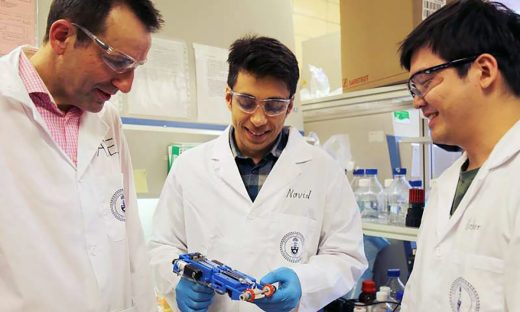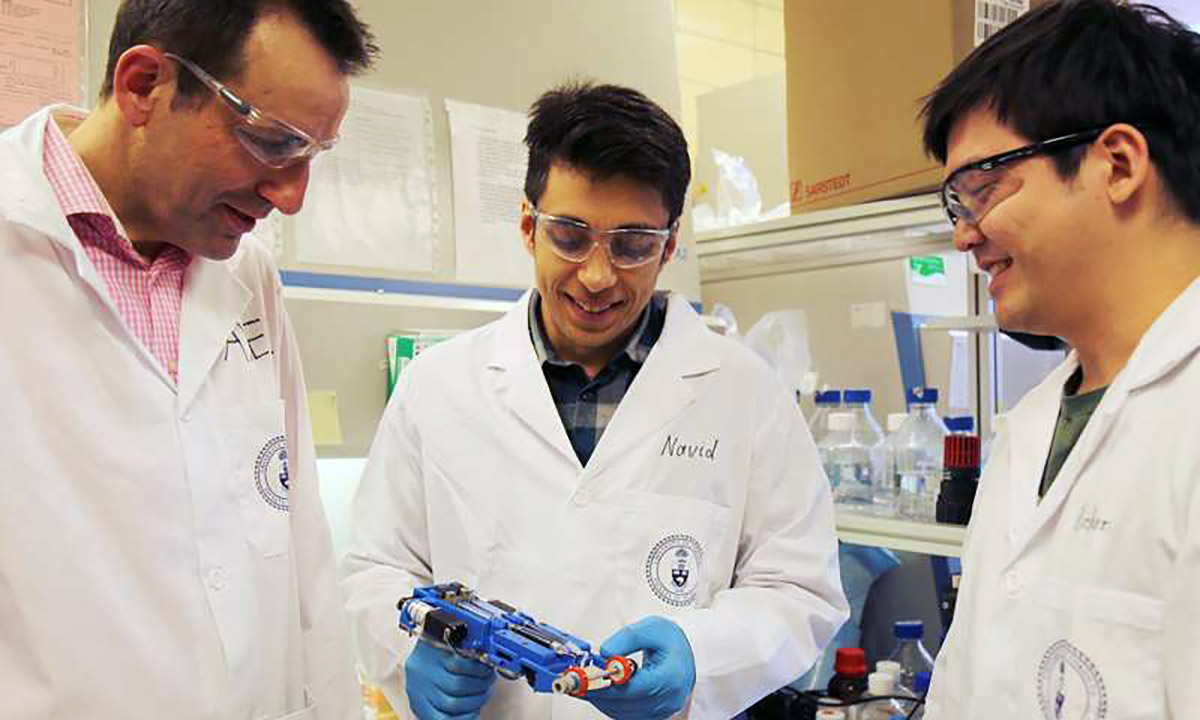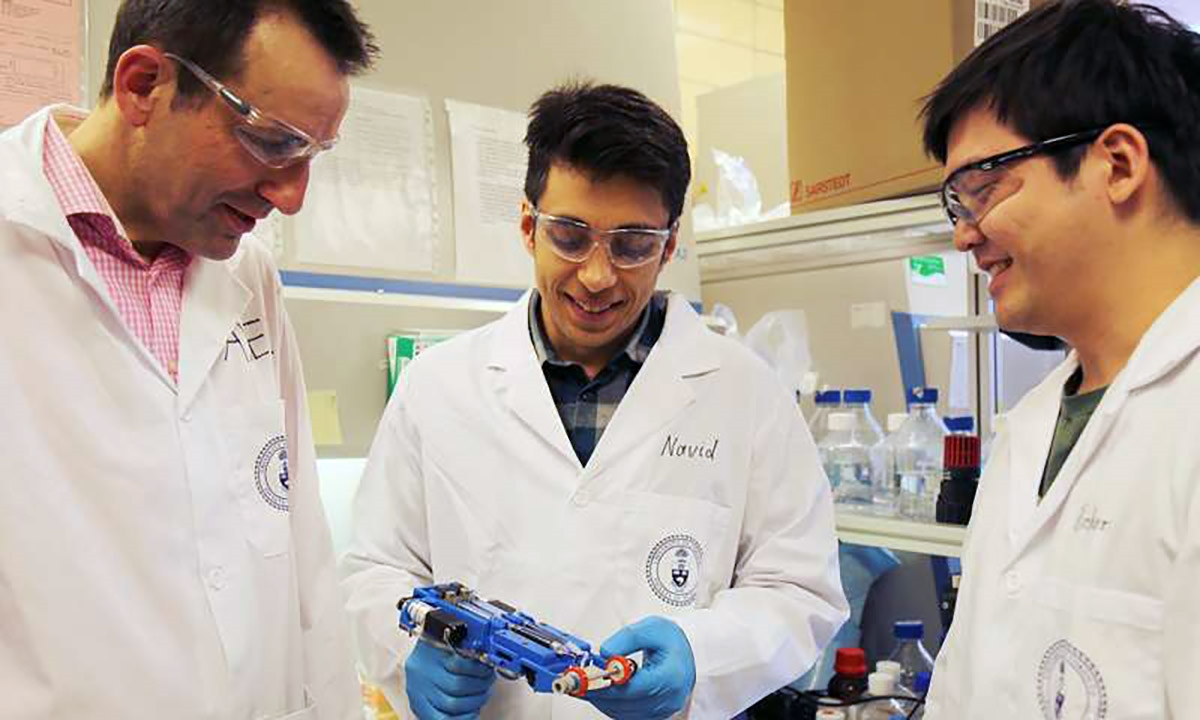Handheld skin printer could help heal burn victims
A handheld device that deposits skin directly onto patients’ wounds could revolutionize the way that doctors treat burns and other wounds. The printer, developed by University of Toronto researchers, is used like a white-out tape dispenser, rolling out protein-based biomaterials like collagen directly on the affected area. It can be used instead of a regular skin graft, but doesn’t require healthy skin to be removed from a donor.
“Most current 3D bioprinters are bulky, work at low speeds, are expensive and are incompatible with clinical application,” said U of T Associate Professor Axel Guenther. Their printer, on the other hand, weighs two pounds, making it feasible to use during surgery. It’s also the first device that can form tissue, depositing and setting it in-situ, within two minutes or less, the team said.
Patients with deep wounds often have damage to all of their skin layers, including the hypodermis, dermis and epidermis. Doctors would normally treat that with a technique called split-thickness skin grafting, but if the wound is too large, it’s difficult to find a sufficient quantity of donor skin. That leaves portions uncovered, leading to healing problems.
The U of T bioprinter could fill that gap, letting doctors quickly apply collagen, the most common dermis protein, and a protein associated with healing, fibrin, to untreated parts of the wound. “Our skin printer promises to tailor tissues to specific patients and wound characteristics,” said PhD student Navid Hakimi.
We’ve seen other 3D skin printing solutions before, but they’ve yet to be applied to human patients. The U of T team hasn’t used the tech on people either, but has tested it on pigs. Next up, the team plans to add new capabilities like enlarging the printer width to cover wider wounds. They’ll also perform more in vivo studies at Toronto’s Sunnybrook hospital, with the goal of eventually testing it on humans.
(28)





